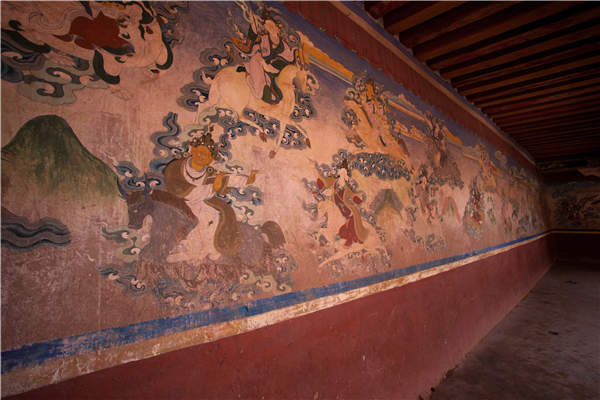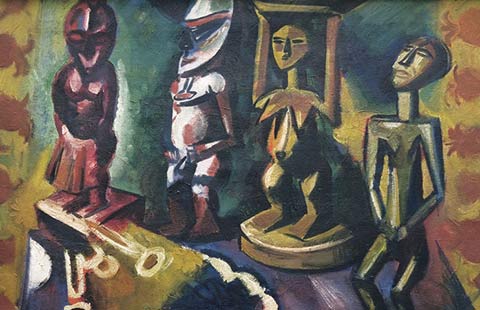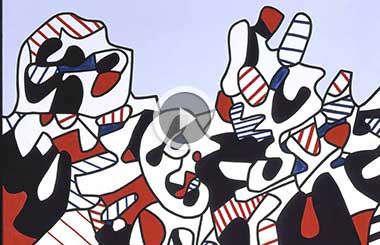Internet podcast brings new life to ancient legend
( Xinhua ) Updated: 2016-02-01 07:56:11
 |
|
A King Gesar themed fresco in the Sakya Monastery of Tibet's eastern Qamdo prefecture. [Photo by Kalzang Gyatso/China Daily] |
Zhang is no stranger to re-imagining works in the pingshu style, having won acclaim for an adaptation of the Japanese cartoon series One Piece, which he produced two years ago.
Adapting King Gesar was no easy task, Zhang said, and the biggest challenge was the different cultural understanding of literary tropes.
For example, while no Tibetan has ever questioned how Gesar's half brother, the unbeatable Chatsa, could be killed by a single arrow, many of Zhang's Han listeners would not have accepted such a plot device.
"How can an invincible hero die such a humiliating death?" Zhang asked.
As many of his target audience would object to such an easy murder, this had to be changed for the new adaptation, which is based on a shortened Chinese version of the epic compiled by Gyanpian Gyamco. Although the Tibetan scholar was open to changes to the narrative to make it "listener friendly", he insisted on the retention of the story's essence. So a new scenario for Chatsa's death was created that would be accepted by the listener, as well as Zhang and Gyanpian Gyamco.
Zhang had not heard of the Gesar epic tradition before he began the project and is aware that his adaptation strays from the original narrative. That said, Gyanpian Gyamco endorsed Zhang's version.
"It is difficult to tell a Tibetan story to those who have no understanding of our culture. The listeners of this story are not Tibetans, and this was Zhang's greatest challenge. I think he has done really well to find the right balance," Gyanpian Gyamco said.
That goes to the heart of what Zhang set out to do. His adaptation "was made to inspire non-Tibetan speakers to listen to this classic epic", he said. "That's what I want."
|
|
|
|
|
|
|
|























 Raymond Zhou:
Raymond Zhou: Pauline D Loh:
Pauline D Loh: Hot Pot
Hot Pot Eco China
Eco China China Dream
China Dream China Face
China Face






